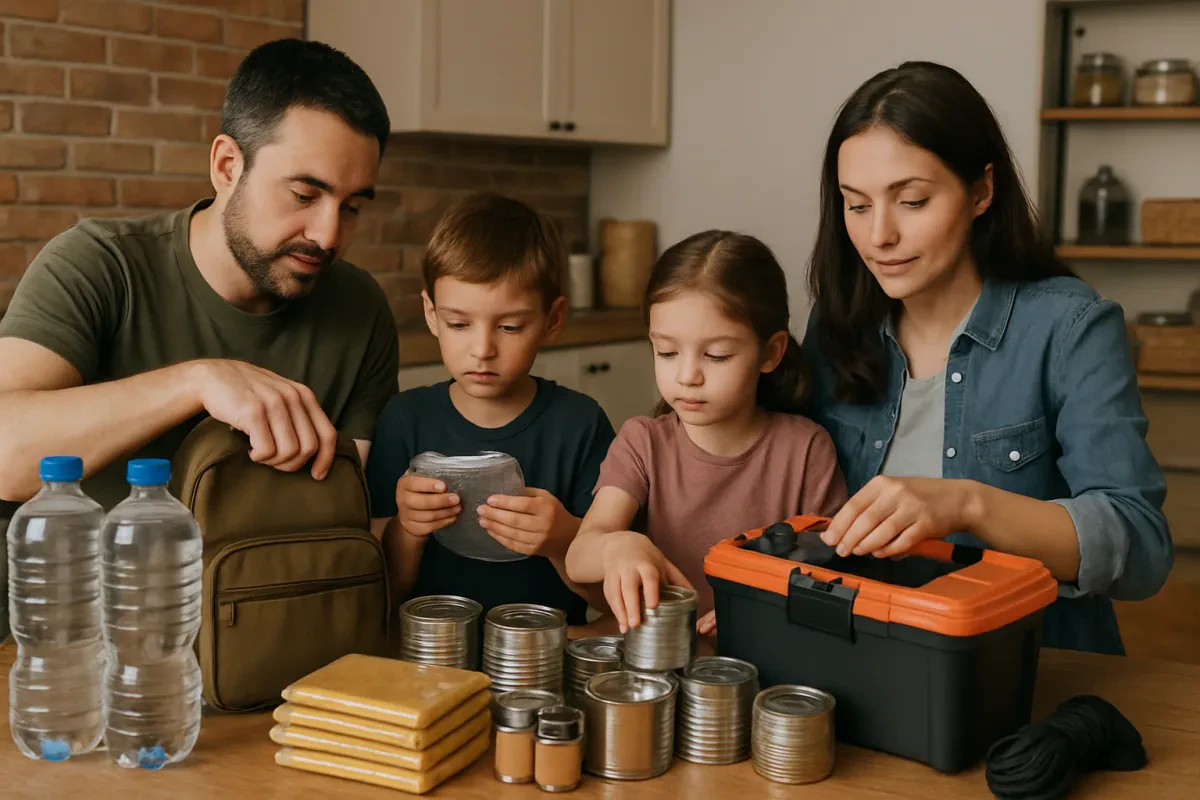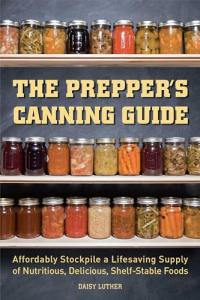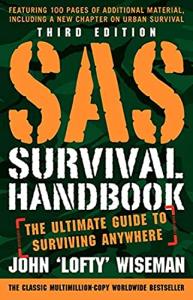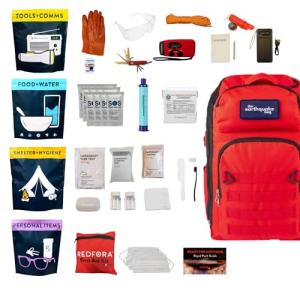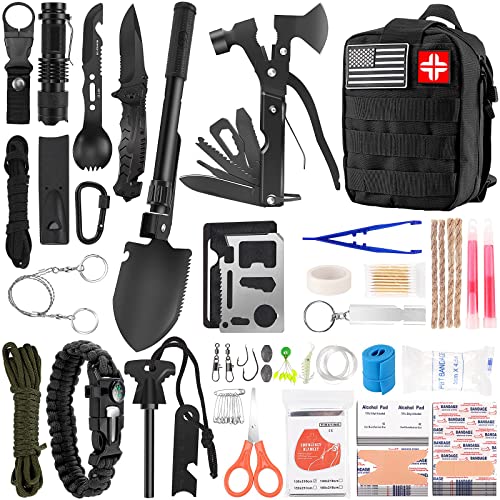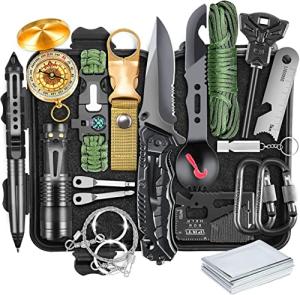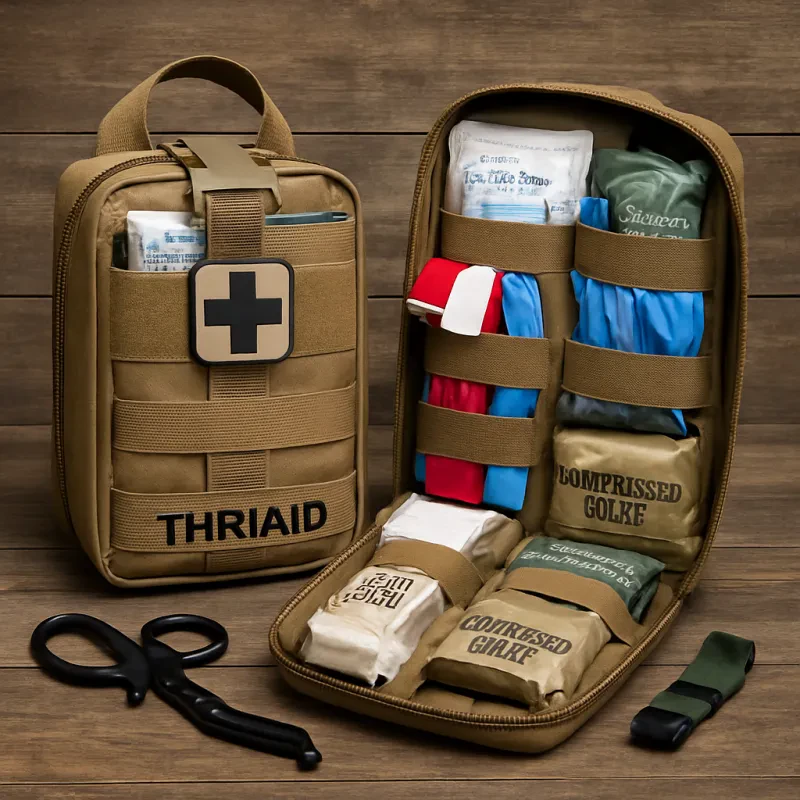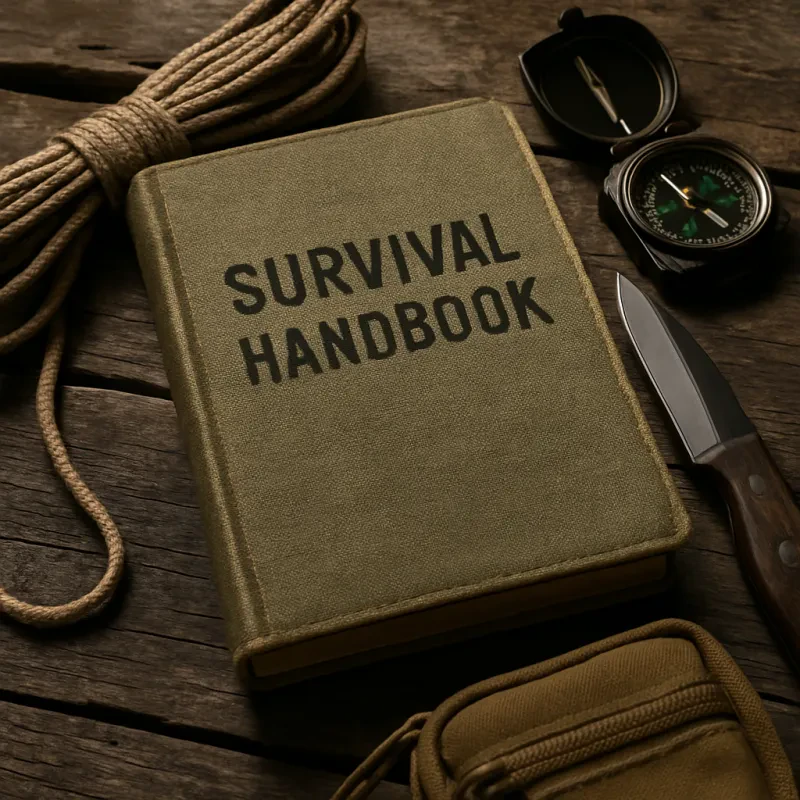The Best Tips for Prepping as a Family on a Budget
Preparing your family for emergencies doesn’t have to be expensive or overwhelming. The most effective budget-friendly prepping is slow, steady, and focused on real risks. Below is a practical, detailed guide to help you build resilience without straining your finances.
1) Start With a Simple Risk Plan
- Identify likely scenarios: power outages, job loss, winter storms, heat waves, local flooding.
- Define basic needs per scenario: water, food, warmth, light, meds, communications.
- Create a one-page family plan: who contacts whom, where to meet, key phone numbers, and a backup caregiver for kids or pets.
Best budget tip: Plan first, buy second. A clear plan prevents impulse buys and duplicates.
2) Build a 72-Hour Foundation First
- Water: 1 gallon per person per day (72 hours = 3 gallons per person). Store in reused, cleaned juice/soda bottles or buy a few 1-gallon jugs weekly.
- Food: Shelf-stable items your family already eats (rice, beans, oats, pasta, canned meat/veg, peanut butter, shelf-stable milk). Aim for “heat-and-eat” options that don’t require long cooking.
- Light and heat: LED headlamps, budget lantern, extra batteries; mylar blankets.
- Hygiene: Baby wipes, trash bags, hand sanitizer, menstrual products, toilet paper.
- Meds: 7-day supply of prescriptions if possible; pain relievers, antihistamines, anti-diarrheals.
- Tools: Manual can opener, basic first-aid kit, lighter/matches, duct tape, multi-tool.
- Documents: Copies of IDs, insurance, key medical info on a USB and printed.
Best budget tip: Create a “go shelf” or plastic tote. Consolidation saves time and money.
3) Adopt the $5–$10 Weekly Build Strategy
Small, regular purchases add up quickly:
- Week 1: 2 gallons of water + box of matches.
- Week 2: 2 cans protein (tuna/chicken) + 2 cans veggies.
- Week 3: Rice (2 lb) + beans (2 lb).
- Week 4: Batteries (AA/AAA) on sale.
- Week 5: First-aid refills (bandages, antiseptic).
- Week 6: Hygiene (toothpaste, soap, wipes).
- Week 7: Fuel for cooking (propane/butane/charcoal) if safe for your home.
- Week 8: Spare phone power bank (catch on sale).
Rinse and repeat, adjusting for sales and dietary needs.
4) Shop Smart: Buy What You Eat, Eat What You Store
- Rotate using FIFO (first-in, first-out): Put new items behind older ones.
- Stock “ingredients + ready-to-eat”: Instant rice, canned chili/soups, pancake mix, shelf-stable milk, ramen + add-ins.
- Watch unit prices and store brands. Hit clearance racks for dented (but safe) cans.
- Use loyalty apps, subscribe-and-save, and bulk stores for staples. Split costs with family or neighbors.
Best budget tip: Plan 5 simple no-power meals your family actually likes.
Prepper's Canning Guide for Nutritious, Shelf-Stable Foods
Learn simple techniques to preserve your favorite foods and enjoy healthy meals anytime
Product information
$15.95 $15.14
Product Review Score
4.09 out of 5 stars
39 reviewsProduct links
5) Water on the Cheap
- Storage: Reuse PET soda bottles after washing with a few drops of unscented bleach, then air-dry.
- Treatment: Keep unscented household bleach (6–8.25%). Dose: 2 drops per liter (8 drops per gallon), wait 30 minutes. Label the bottle “for water purification.”
- Filtration: A basic gravity filter or budget backpacking filter on sale. Boiling remains the cheapest, if fuel is available.
6) Affordable Cooking Options
- Stove: Butane single-burner or small propane stove. Watch for sales; buy one extra fuel canister per month. Check out this compact folding stove from Coghlan.
- No-cook backup: Pouches, canned meals, protein bars, peanut butter, tortillas.
- Fuel safety: Store outside living areas if possible; never use fuel-burning stoves indoors without proper ventilation.
7) Build a Lean but Capable First-Aid Kit
- Essentials: Assorted bandages, gauze, tape, antiseptic wipes, antibiotic ointment, hydrocortisone, tweezers, oral rehydration salts, pain reliever, antihistamine, anti-diarrheal, thermometer.
- Personal add-ons: Inhalers, EpiPen, spare glasses, kid-specific meds and dosing chart.
- Low-cost learning: Print a one-page first-aid cheat sheet; watch free Red Cross videos; consider a community class when discounted.
85 Piece First Aid Kit for Preppers
Be Prepared for Emergencies with Our Comprehensive First Aid Kit
Product information
$6.79 $6.44
Product Review Score
4.59 out of 5 stars
12 reviewsProduct links
8) Clothing, Warmth, and Shelter—On a Budget
- Layering: Thrift-store wool sweaters, beanies, gloves. Emergency mylar blankets are cheap; add a fleece throw for comfort.
- Weatherproofing: Clear plastic sheeting and duct tape to seal windows in winter storms; door draft stoppers.
- Bedding: Each family member has a blanket or sleeping bag accessible.
9) Communications and Power Without Breaking the Bank
- Power bank: One decent 10k–20k mAh unit per household; rotate charging monthly.
- Lighting: Headlamps over flashlights for hands-free use; buy AA/AAA in bulk on sale.
- Info: Inexpensive hand-crank/solar AM/FM weather radio if possible.
- Contacts: Print key numbers; teach kids how to text “I’m OK at [location]” to a designated out-of-area contact.
10) Create Family Routines and Skills
- Monthly 20-minute drill: Test flashlights, charge power banks, check water, update meds.
- Cooking practice: Make one shelf-stable meal per month so it’s familiar.
- Teach basics: How to shut off water and breaker panel; where the kit is; how to use a fire extinguisher.
Best budget tip: Skills are free to store and never expire.
11) Involve Kids Without Fear
- Make it a game: Scavenger hunt for the first-aid kit, “lights out” evening using lanterns, water-fill day.
- Responsibility: Each child’s “mini-kit” (whistle, snack bar, tiny flashlight, bandages).
- Education: Simple, age-appropriate talks about staying calm and staying together.
12) Transportation and Evacuation on a Budget
- Gas rule: Try to keep the tank above half. Add $5–$10 of extra gas storage only if safe/legal in your area.
- Car kit: Bottled water, granola bars, jumper cables, tire inflator/sealant, blanket, basic first aid, phone charger.
- Go-bags: One per adult, lighter for kids. 3 days of snacks, water, meds, copies of documents, cash in small bills.
275-Piece Car First Aid Kit for Emergencies
Be prepared for anything on the road with this comprehensive first aid kit designed for drivers
Product information
$16.99
Product Review Score
4.49 out of 5 stars
109 reviewsProduct links
13) Financial Preparedness
- Micro-emergency fund: Start with $100 in small bills, build toward $500+. Keep some cash at home.
- Budget buffer: Stock up when staples hit rock-bottom prices; skip “tactical” gear until the basics are covered.
- Insurance checkup: Photograph belongings; confirm renters/home/auto coverage and deductibles.
14) Community and Mutual Aid
- Share bulk buys with neighbors or family.
- Swap skills: One person has tools, another knows first aid, another has a grill.
- Local knowledge: Learn shelter locations, community alerts, and neighborhood risks.
15) Maintenance Checklist (Free or Cheap)
- Monthly: Rotate water checks, charge power banks, test smoke/CO alarms.
- Quarterly: Rotate pantry items into meals; replenish what you eat.
- Seasonally: Winterize/prepare for heat waves; clean gutters; check weatherproofing.
Survival Handbook: Your Ultimate Guide for Anywhere
Learn practical tips and strategies to thrive in any survival situation, no matter where you are
Product information
$25.99 $17.16
Product Review Score
4.29 out of 5 stars
77 reviewsProduct links
The One Best Budget Tip (If I had to pick one)
Commit to a small, recurring prep habit: spend $10 and 10 minutes every week. Decide the category in advance (water, food, light, meds, power, documents, skills), then execute. The compounding effect over 3–6 months is huge—and it’s gentle on your budget.
